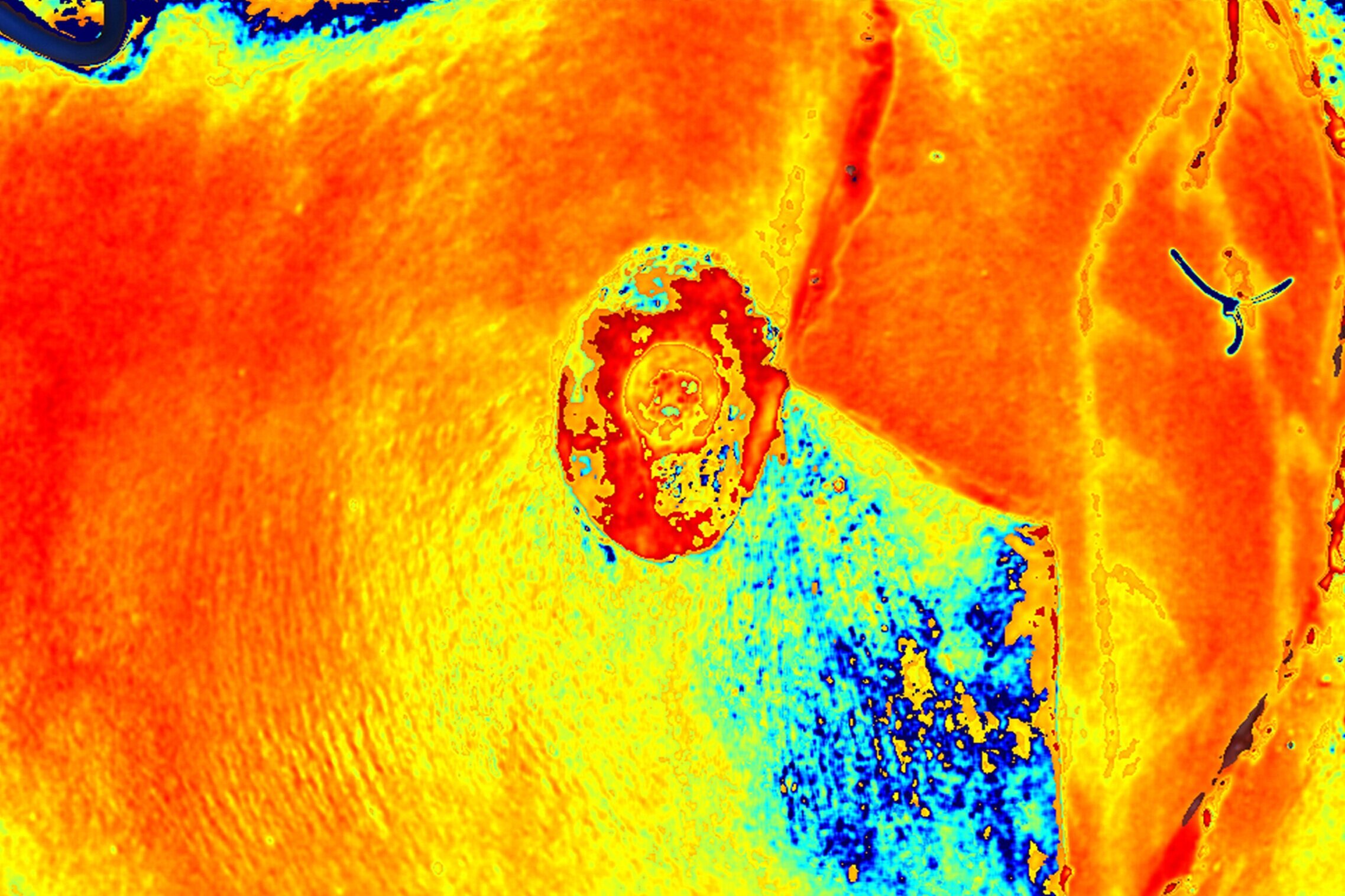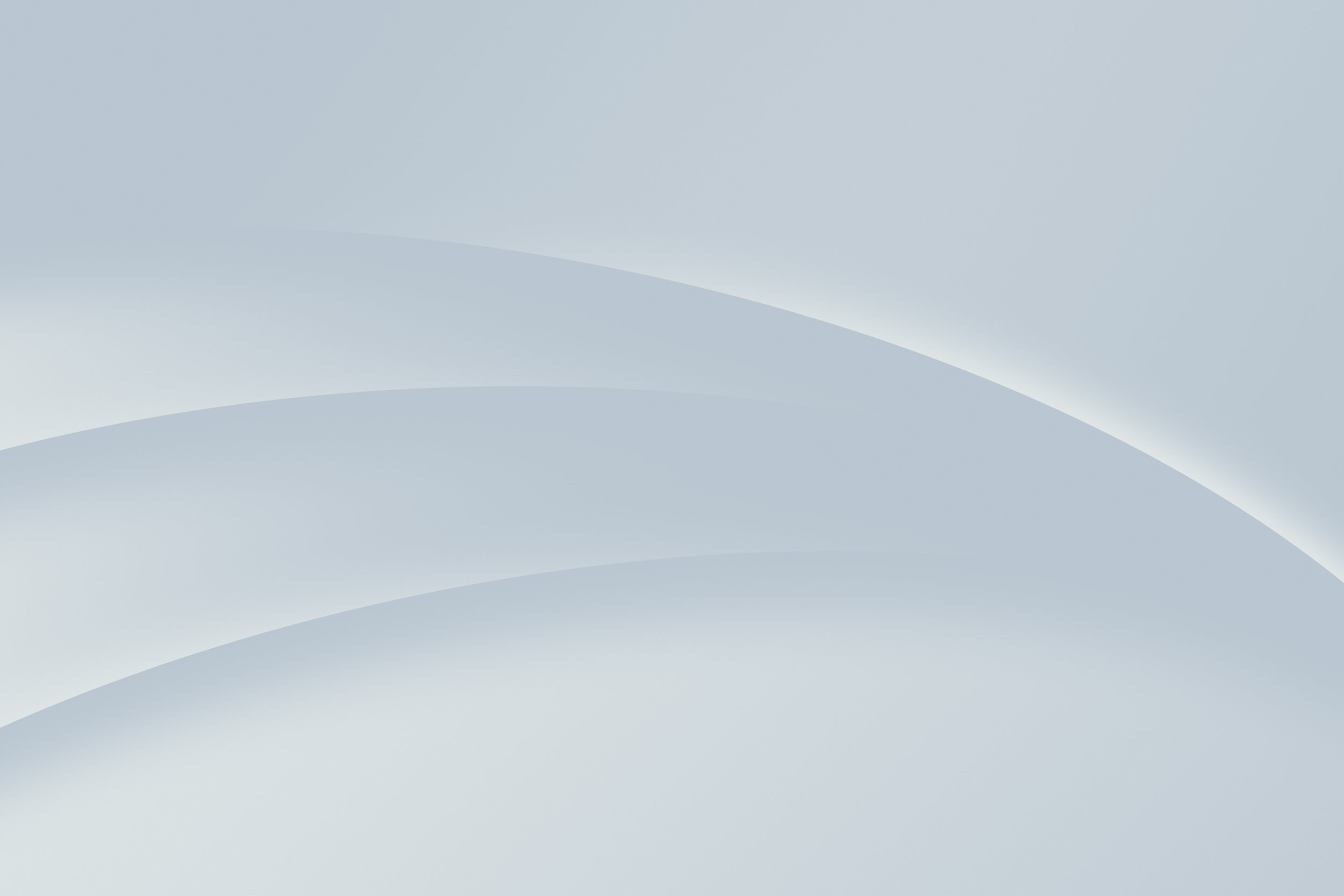


Where can SnapshotNIR help you reduce complications and improve outcomes? Click the Button to find out.
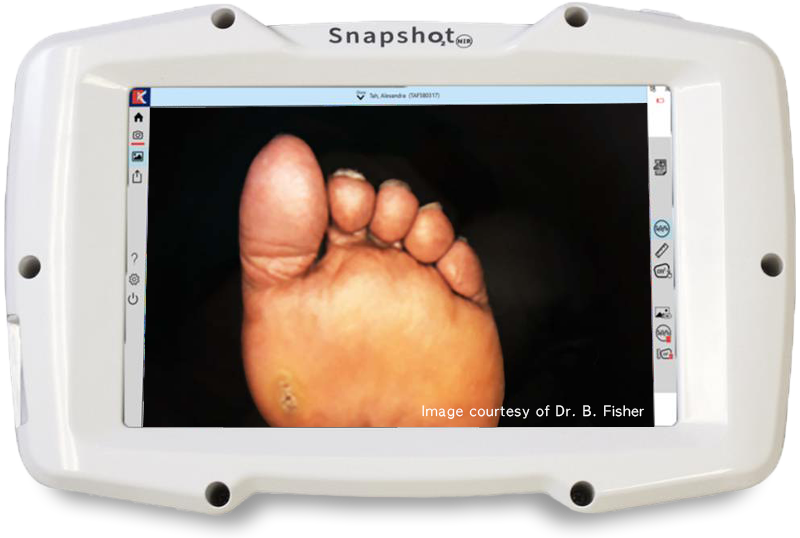
Visual assessment is an important part of wound management but does not always tell the full story. Use SnapshotNIR to assess tissue health below the surface.

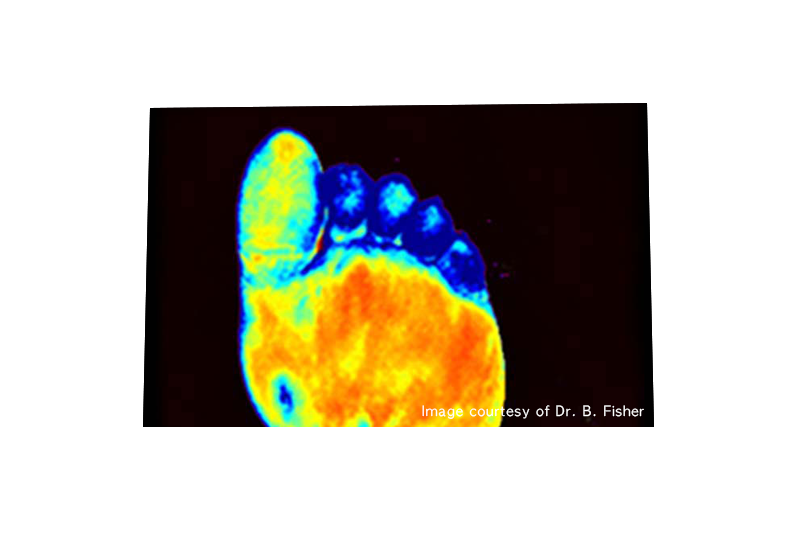
This patient presents with poorly oxygenated digits as well as a DFU with callus on the planter aspect of the foot. The tissue oxygenation at these two sites is low. What would you do with this insight?
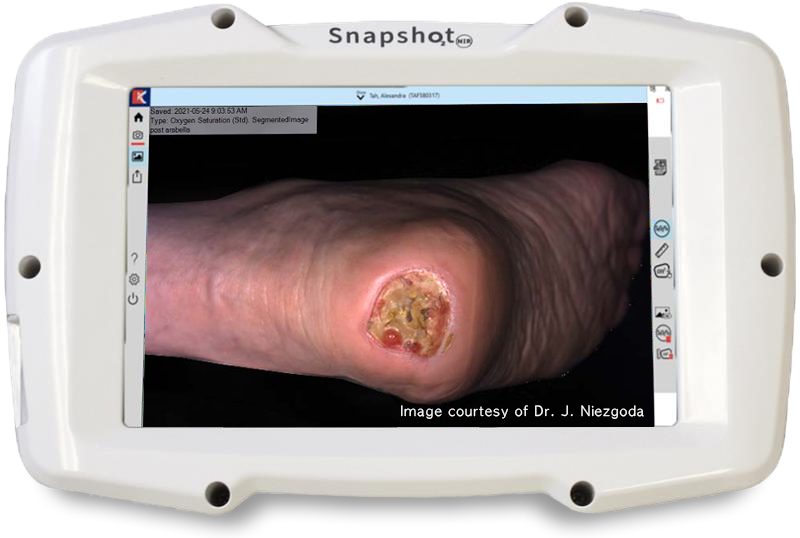
This image captured with SnapshotNIR shows a non-stageable pressure ulcer to the left heel.

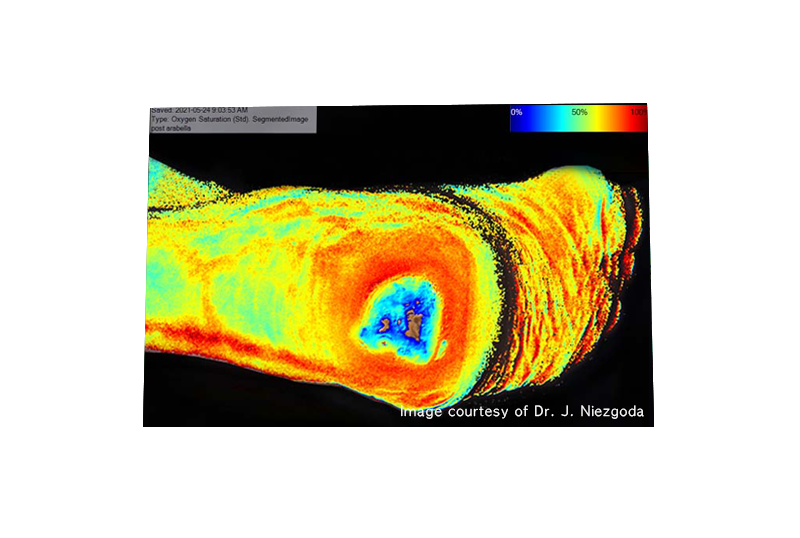
The matching oxygenation map captured with SnapshotNIR at the same time is used to assess tissue oxygenation pre-debridement and to provide medical necessity documentation for the debridement procedure.
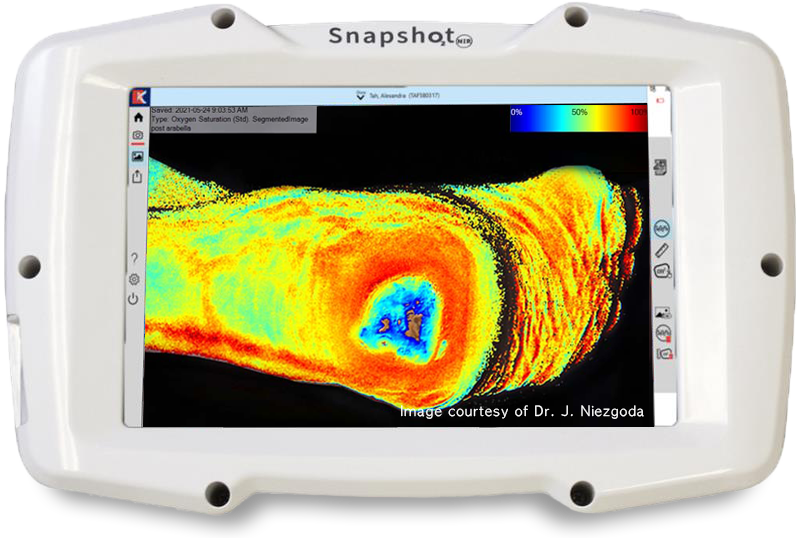
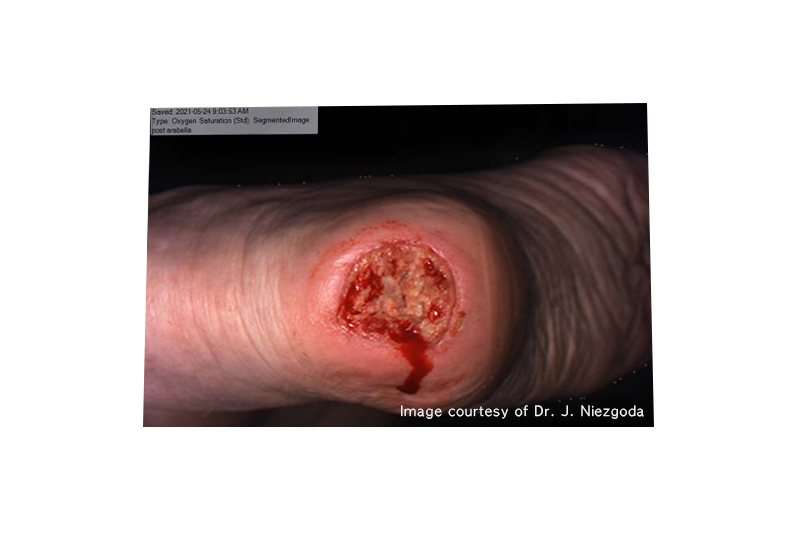
Re-imaging the wound following the procedure is used to evaluate the effectiveness of the debridement, to assess change to the tissue oxygenation level and to provide the ability to stage the pressure ulcer.
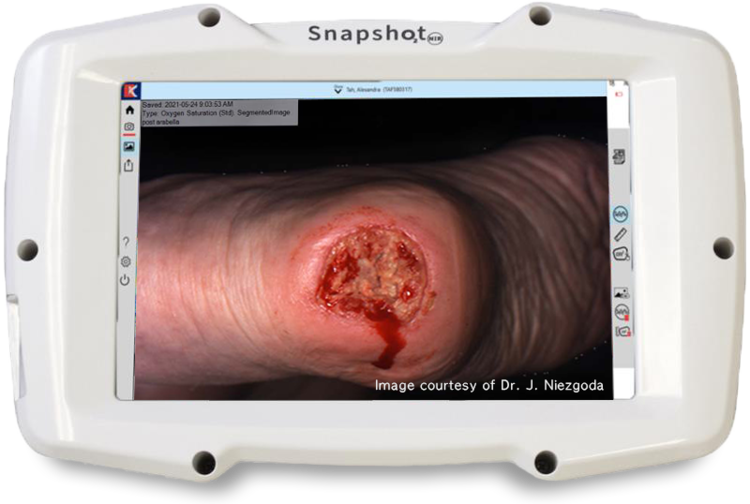
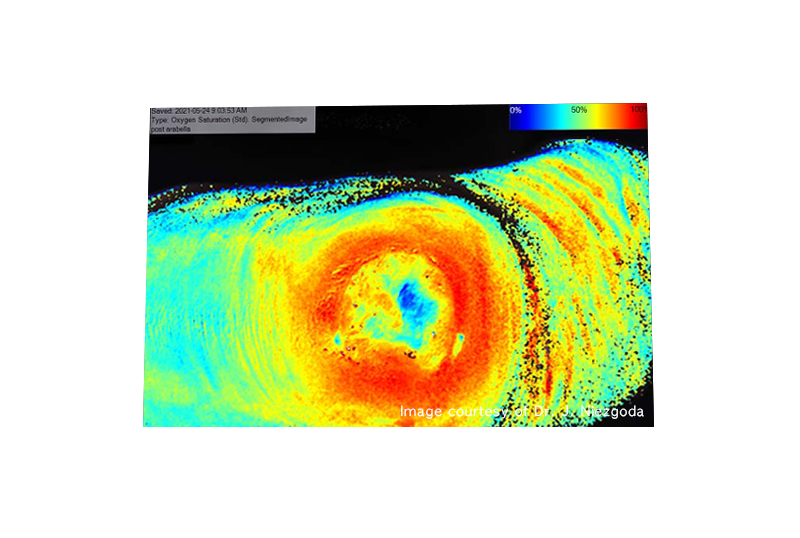
Note the increased oxygenation to the peri-wound which predicts the ability to heal. The post-debridement image set provides documentation for patient outcomes.
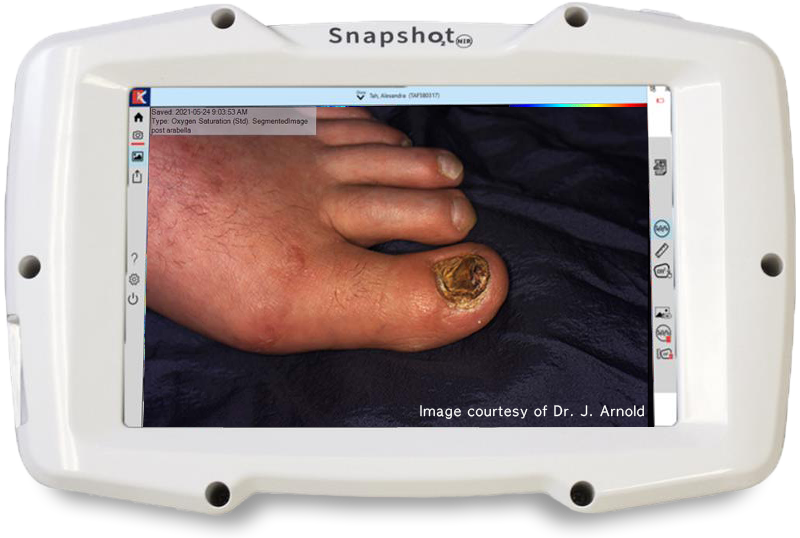
Use SnapshotNIR to qualify candidacy for HBOT by illustrating and documenting response to the challenge.

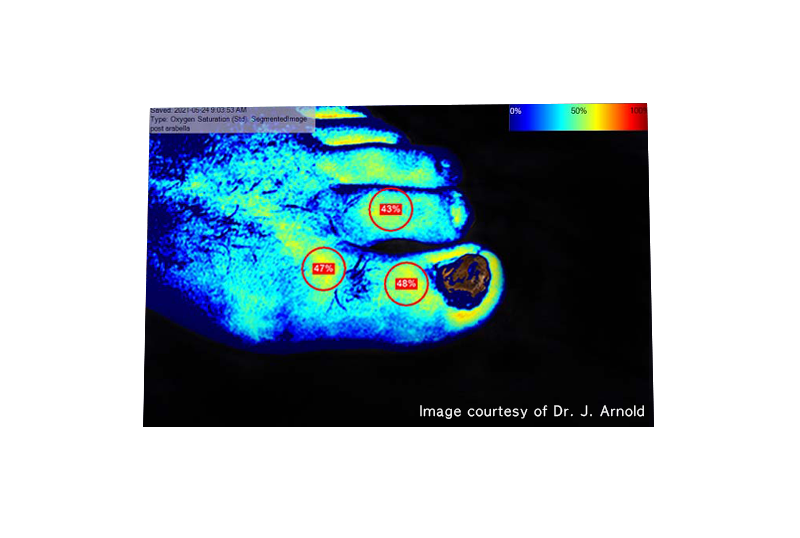
Pre-HBOT oxygenation (StO2) image returns an assessment that indicates low tissue oxygenation levels.
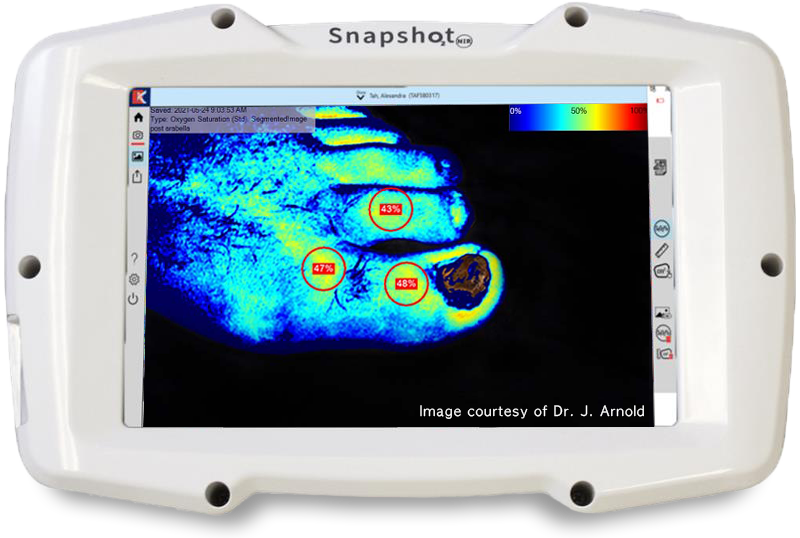
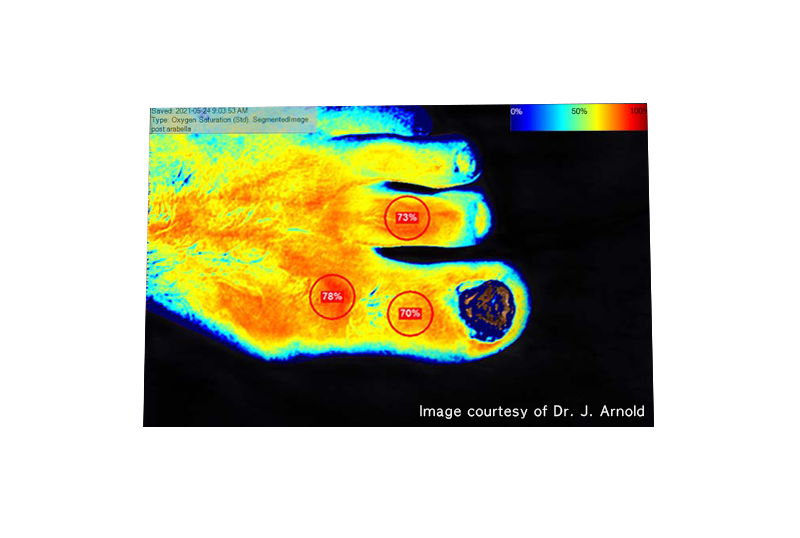
The post HBOT StO2 image documents that the patient has responded to HBOT. This would support additional dives and continued monitoring.
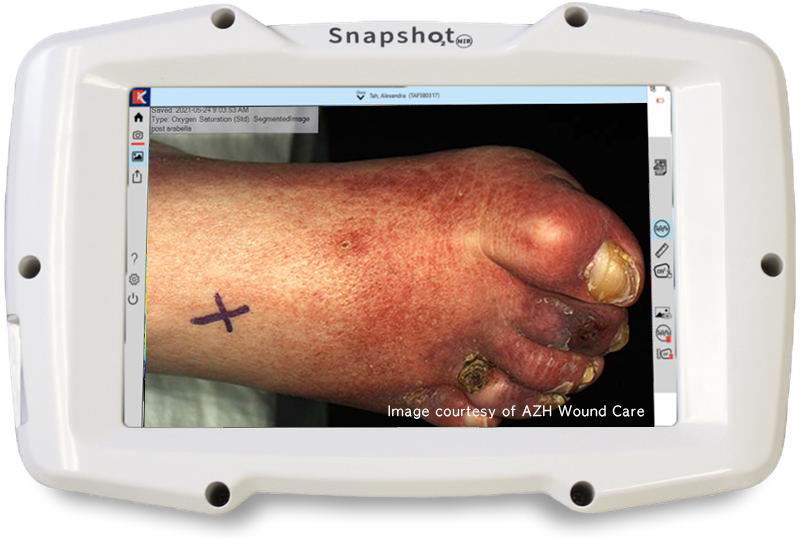
Oxygenation imaging can illustrate compromised angiosomes. SnapshotNIR images can be used to expedite vascular referral or to monitor the success of vascular intervention to restore blood flow and oxygenation to compromised tissues.


Initial Snapshot assessment provides a concern with inadequate oxygenation. Note that oxygenation markers can be placed anywhere on the image by touching the screen.
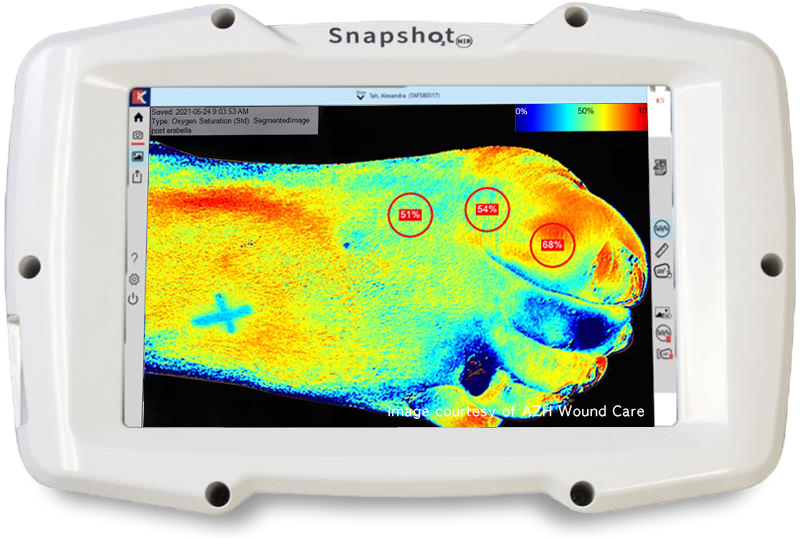
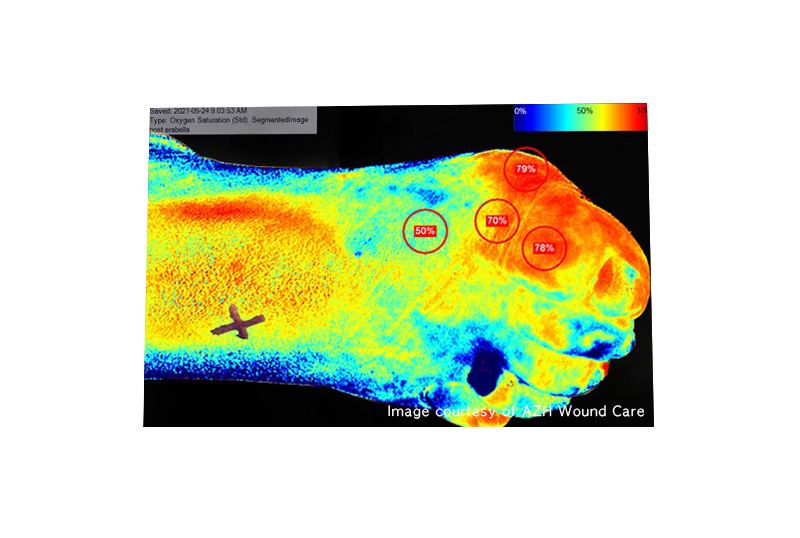
Oxygenation (StO2) image post-revascularization procedure indicates improved flow and oxygenation to the compromised tissues. Imaging is used to monitor patient for need for additional vascular intervention and to ensure they do not re-occlude.
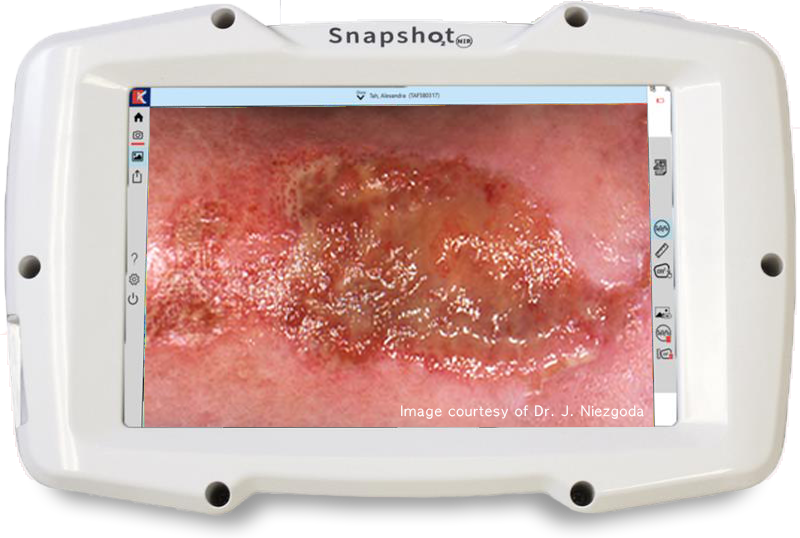
Patient presents with venous insufficiency ulcers which are known for a high bioburden and non-viable tissue.

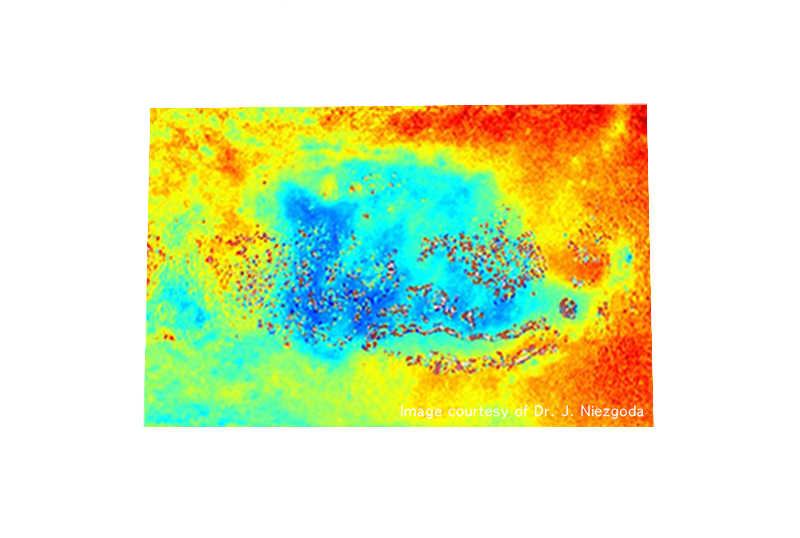
Snapshot images shows insufficient oxygenation in the wound bed and proximal peri-wound.
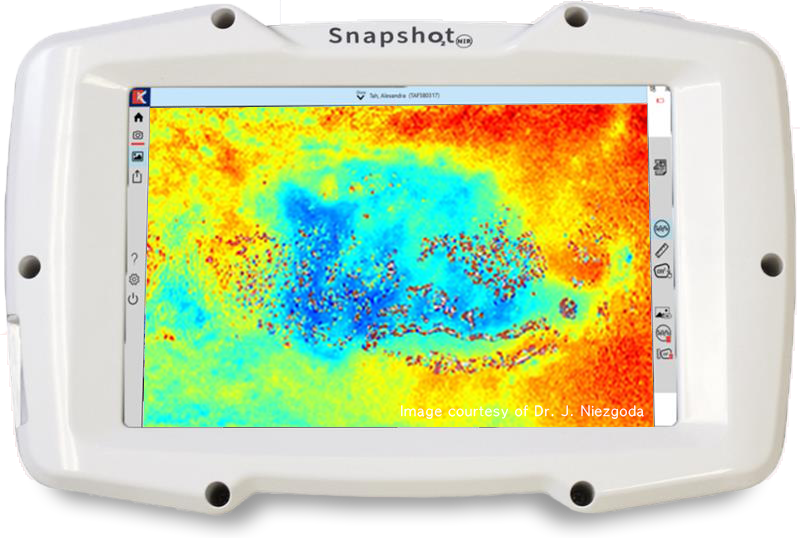
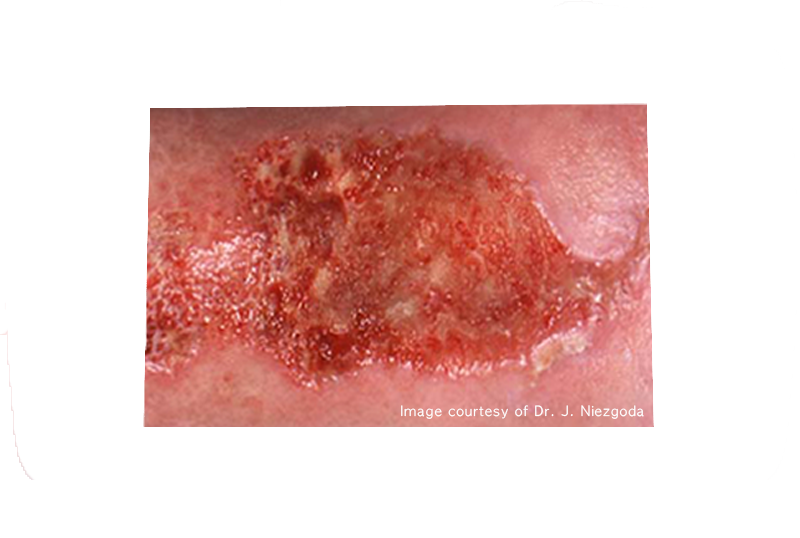
Ultrasonic debridement is performed to regenerate tissue and aid in wound healing. The wound is reimaged with SnapshotNIR post-procedure.
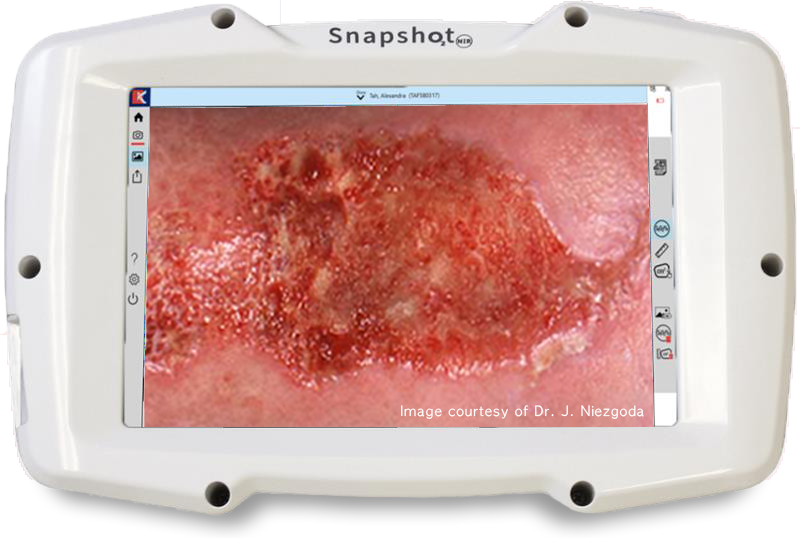
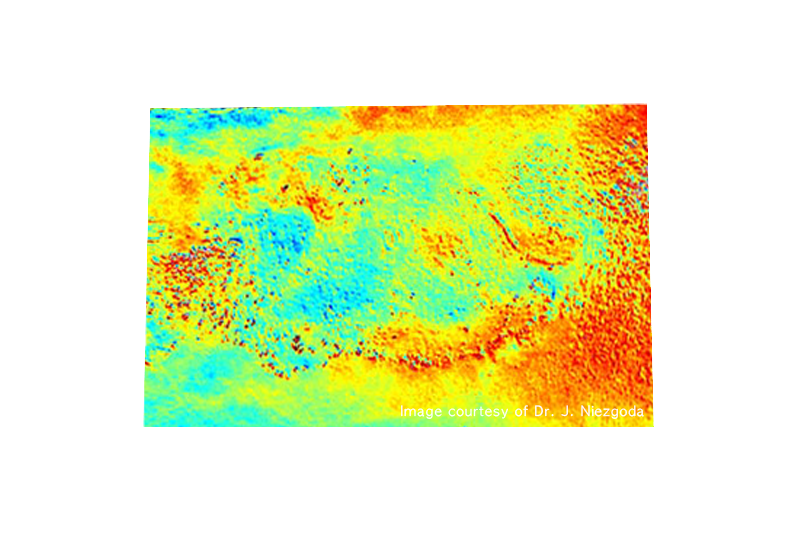
The SnapshotNIR StO2 image documents increased oxygenation in the wound bed and peri-wound.
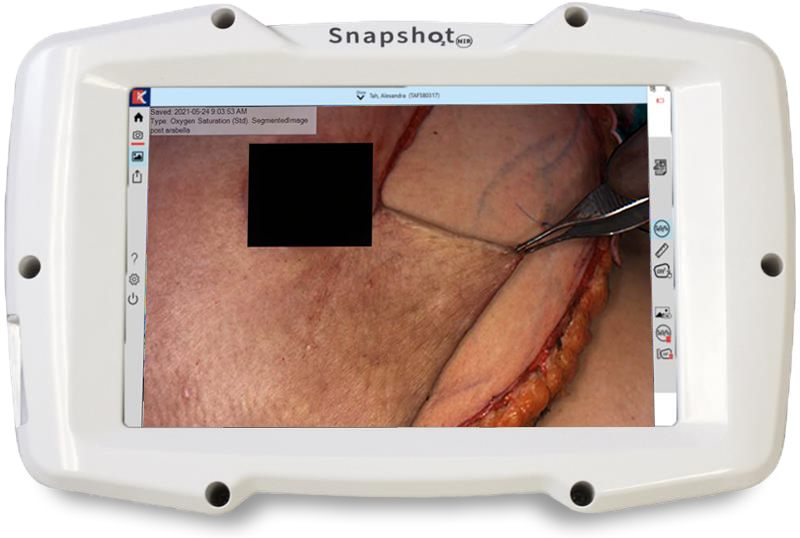
Informed assessment of tissue viability is critical to positive outcomes in cosmetic and reconstructive procedures. Is this post-mastectomy skin flap likely to survive on reconstructive closure?

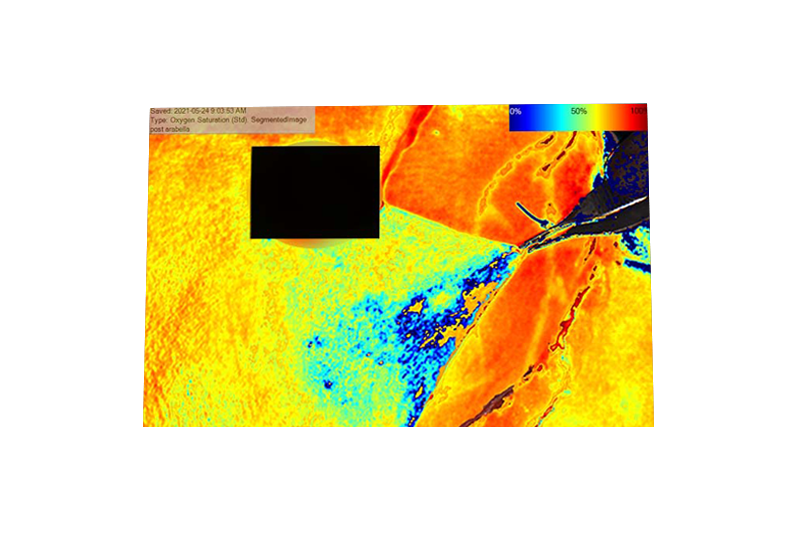
SnapshotNIR images captured intraoperatively indicate that the flap tissue is poorly oxygenated and predicts flap failure.
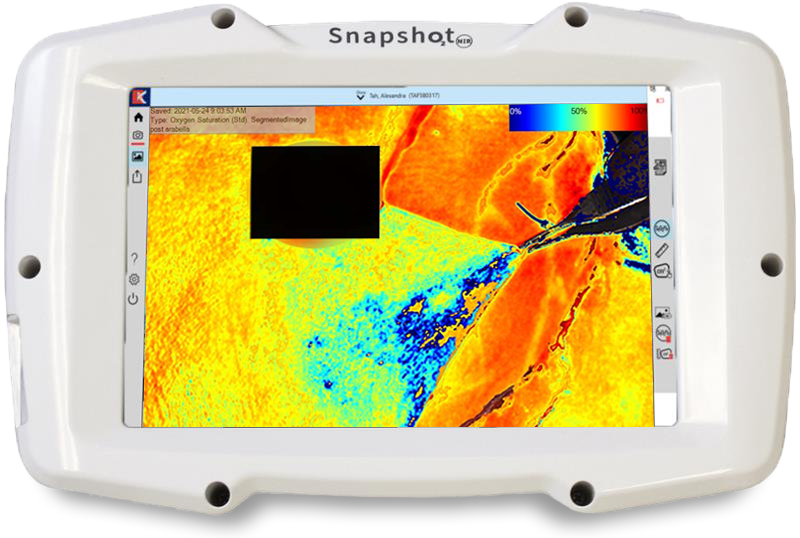
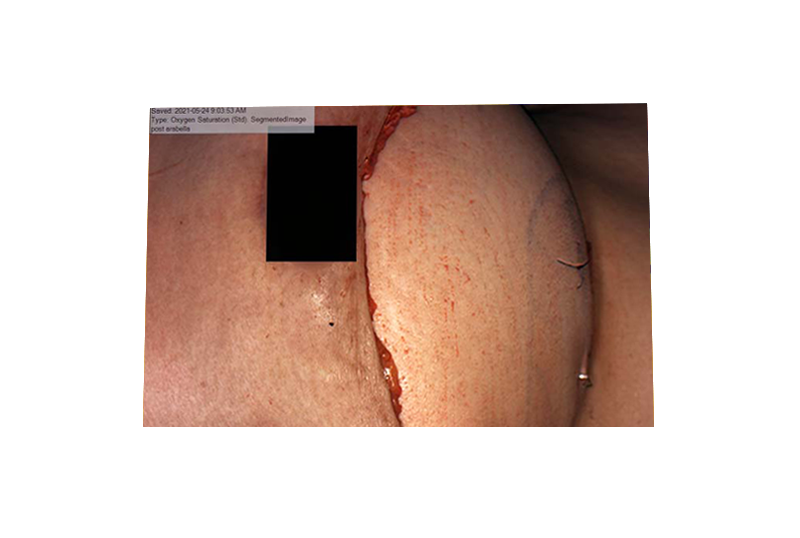
This information supports the intraoperative surgical decision to perform an immediate revision.
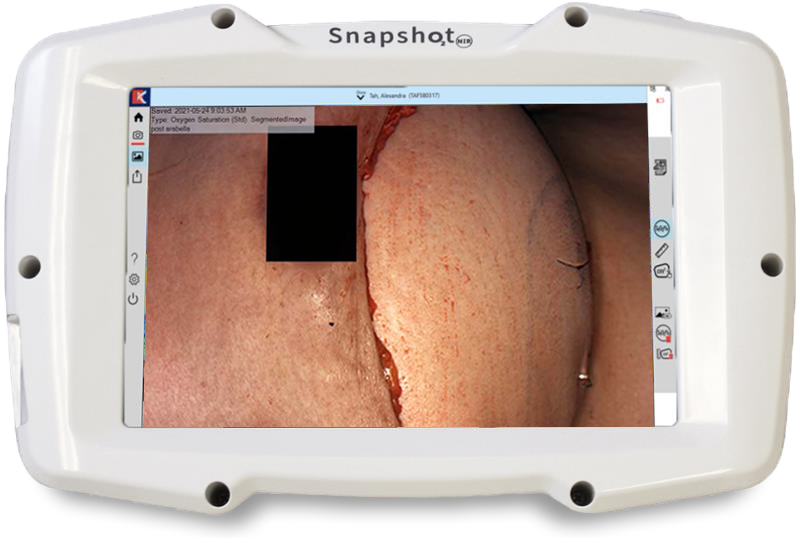
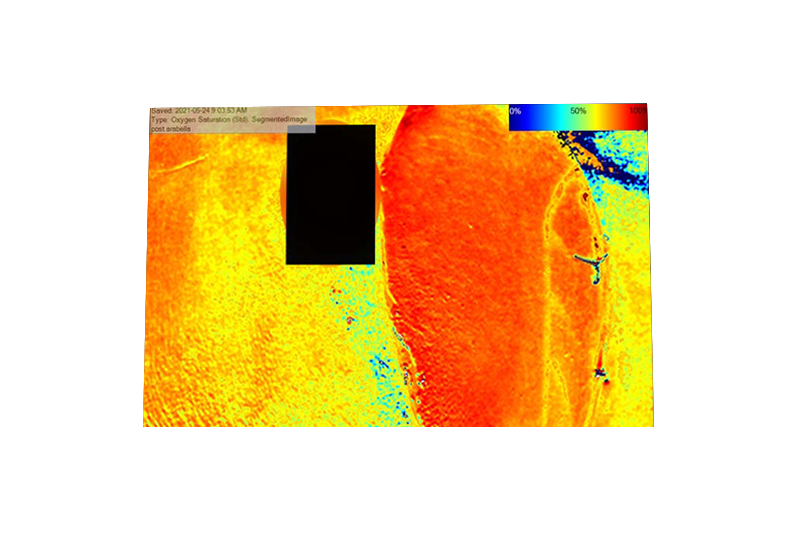
SnapshotNIR images captured immediately following the guided revision indicate a well oxygenated flap. Post operative monitoring with SnapshotNIR is performed in recovery and in office follow-up to ensure flap survival.
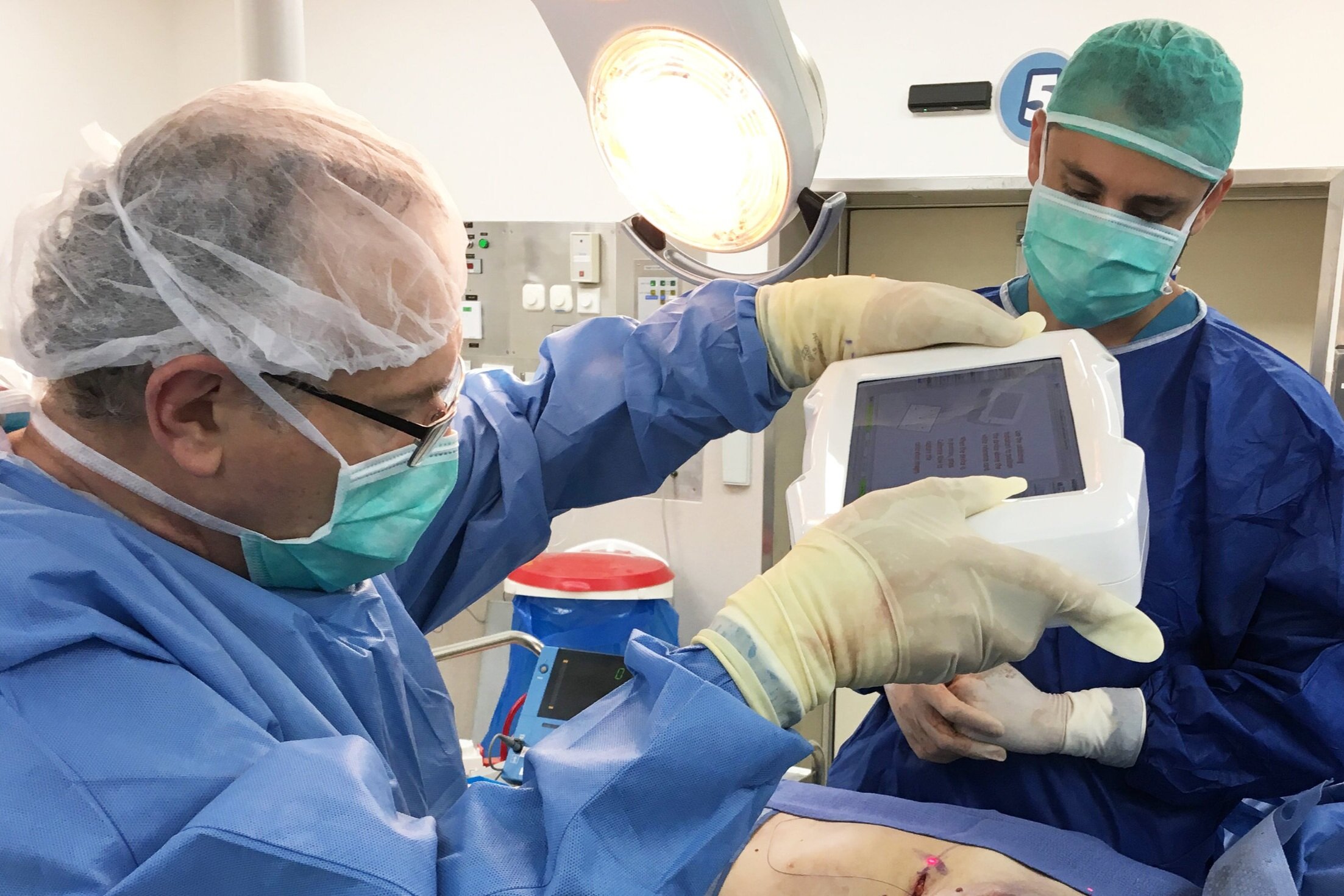

TIME IS TISSUE, YET EFFECTIVE WOUND MANAGEMENT CAN BE A REAL CHALLENGE
Obtain actionable data at every visit to assess, track and document medical necessity, evaluate the therapeutic efficacy, and record outcomes.
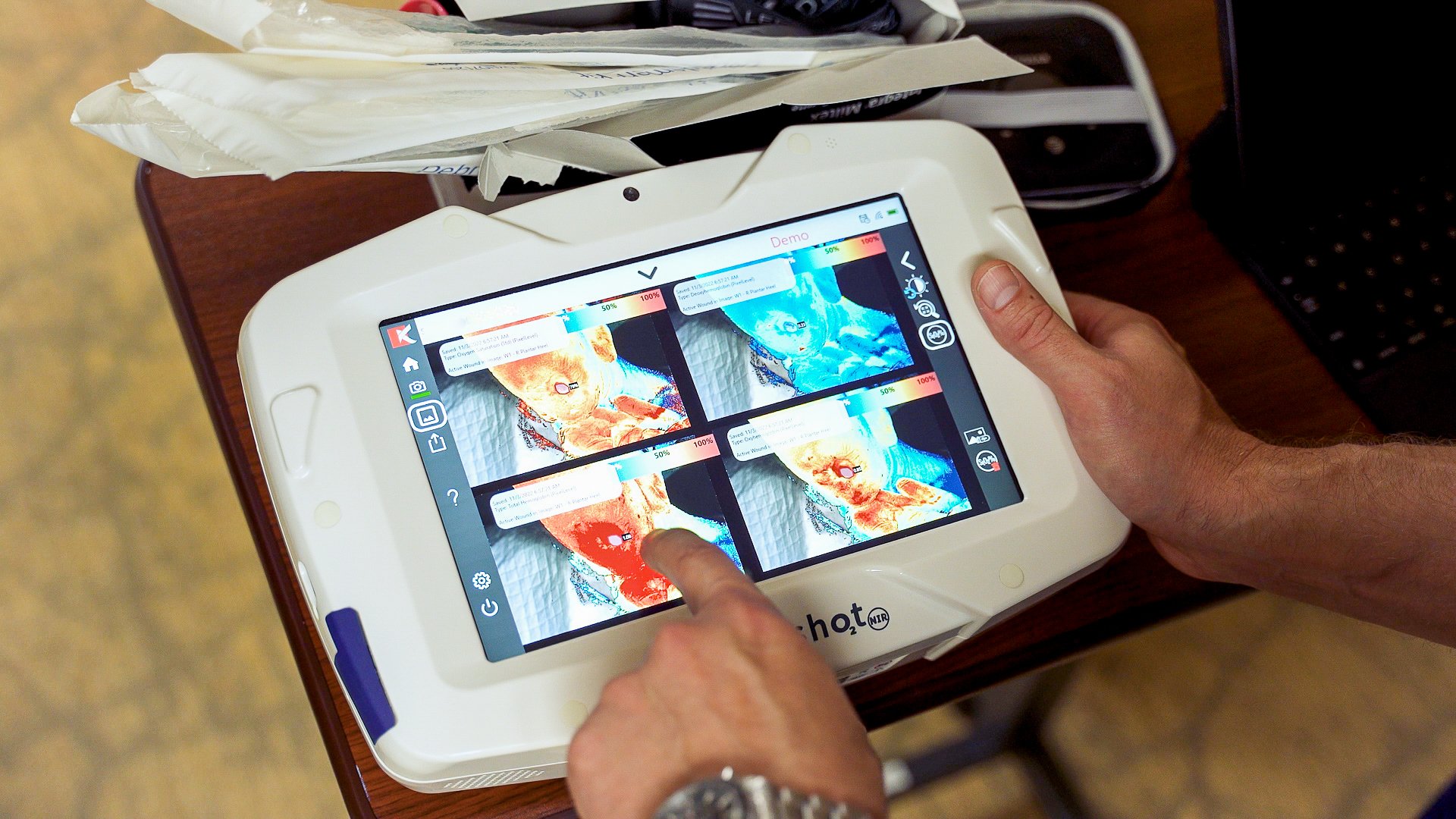
Chronic wounds are difficult to treat, cost healthcare systems billions of dollars each year, and greatly affect patient quality of life. In severe cases, these types of wounds can lead to limb amputation. Current diagnostic tools to assess tissue health are either costly or difficult to employ (or both), and visual assessment alone is not adequate to see the whole picture.
SnapshotNIR is an easy-to-use, cost-effective, and repeatable tool to assess and track the tissue oxygen level in a patient, whether at a wound site or in an area of vascular concern. SnapshotNIR provides medical professionals value-based insight into the ongoing healing process when assessing and treating chronic wounds.
Blood perfusion is necessary to supply oxygen to tissues and is generally measured in the macrovascular network. This perfusion, although critical, does not necessarily mean that the oxygen is being successfully offloaded in the tissues at the microvascular or capillary network level, as perfusion can exist with very limited oxygen bound to hemoglobin.

WOUND ASSESSMENT AND MONITORING
Using near-infrared spectroscopy imaging with SnapshotNIR provides a clinician with near-instantaneous insight into “what lies beneath,” through the capture and display of tissue oxygenation in and around a wound. This actionable data can improve in situ decision-making to impact patient outcomes and provides the ability to easily track and document medical necessity, therapeutic efficacy and results.
With the click of a button on the hand-held device, you can capture images to assess tissue response to this advanced therapy. These images help to confirm qualification for continued hyperbaric oxygen treatment.
Due to its ease of use in assessing tissue response to therapy, more patients can be screened and qualified for HBOT treatment with expedited referrals.
When patient’s see progress occurring below the surface – something they cannot see with their eyes – they are much more likely to comply with the full course of treatment.
The data captured helps the clinician evaluate and document therapeutic efficacy. This supports the decision on how many dives are effective for each patient, helping to keep your chambers full with patients deriving treatment benefit. The images also help to indicate when it is time to stop.
The images captured and compared with each dive cycle provide medical necessity documentation for continued efficacy, which may help to expedite approval from 3rd party payors for the continuation of treatment.
HYPERBARIC OXYGEN THERAPY
SnapshotNIR‘s near-infrared spectroscopy imaging not only helps to qualify a patient for hyperbaric oxygen treatment and to clearly document ongoing therapeutic efficacy, it aids in keeping patients engaged and committed to the treatment program by effectively demonstrating improvements to tissue health following each set of dives.

As a non-invasive tissue assessment device, Snapshot can triage patients earlier in the care process and expedite referral to integrated specialties, including vascular, enhancing interdisciplinary communication.
Using the oxygenation data provided, Snapshot helps focus on wound bed preparation helping to guide how much tissue to debride. Capturing images pre- and post intervention gives timely feedback which can positively impact the clinician’s next move.
If a treatment path is not providing the expected benefits, Snapshot can support the decision to implement a change more quickly to expedite wound healing.
Snapshot provides the ability to capture linear and area measurements directly on the images and store these in the patient record for easy numerical and visual comparison over time, speeding-up clinical workflow.
Healing can be tracked and documented with Snapshot, with image reports easily added to the patient record. These documented reports can be used to support medical necessity and proof of therapeutic efficacy for 3rd party reimbursement.
CELLULAR, ACELLULAR AND MATRIX-LIKE PRODUCTS (CAMPs)
Using near-infrared spectroscopy imaging with SnapshotNIR can be very helpful in delivering better outcomes with respect to CAMPs. SnapshotNIR can assist in identifying if a CAMP will successfully integrate into the wound bed and promote angiogenesis by identifying a well-prepared and oxygenated wound bed.

The easily captured images help to quickly assess the vascular status of the wound bed and peri-wound. Is there adequate perfusion and oxygenation to support the procedure?
The tissue oxygenation images help “see”, or validate when a wound bed is optimally prepared with adequate oxygenation in all regions of the peri-wound and the wound margin, which is more likely to lead to adherence, integration and tissue granulation for expedited healing rather than to failure.
Using the built-in measurement tools, you can document the wound size area and linear dimensions to help select the best size of tissue application, reducing potential product wastage.
Healing can be tracked and documented, with the image reports easily added to the patient record. These documented reports can be used to support medical necessity and proof of therapeutic efficacy for 3rd party reimbursement.
Access to non-invasive vascular assessments (NIVA) are limited and the type of NIVA is specialty specific, with no simple solution existing across specialties. This creates confusion in identifying ischemic events in a health system or throughout the care continuum. Many healthcare professionals rely on clinical judgement alone in their assessment of the tissue due to complexities, costs, and inconsistencies in obtaining NIVAs at all care points.


Increasing access to non-invasive vascular assessments triages patients earlier in the care stream and accelerates intervention at the appropriate point-of-care. Assessing the tissue post-intervention in the OR can help optimize the therapy and provide a method for regular monitoring.
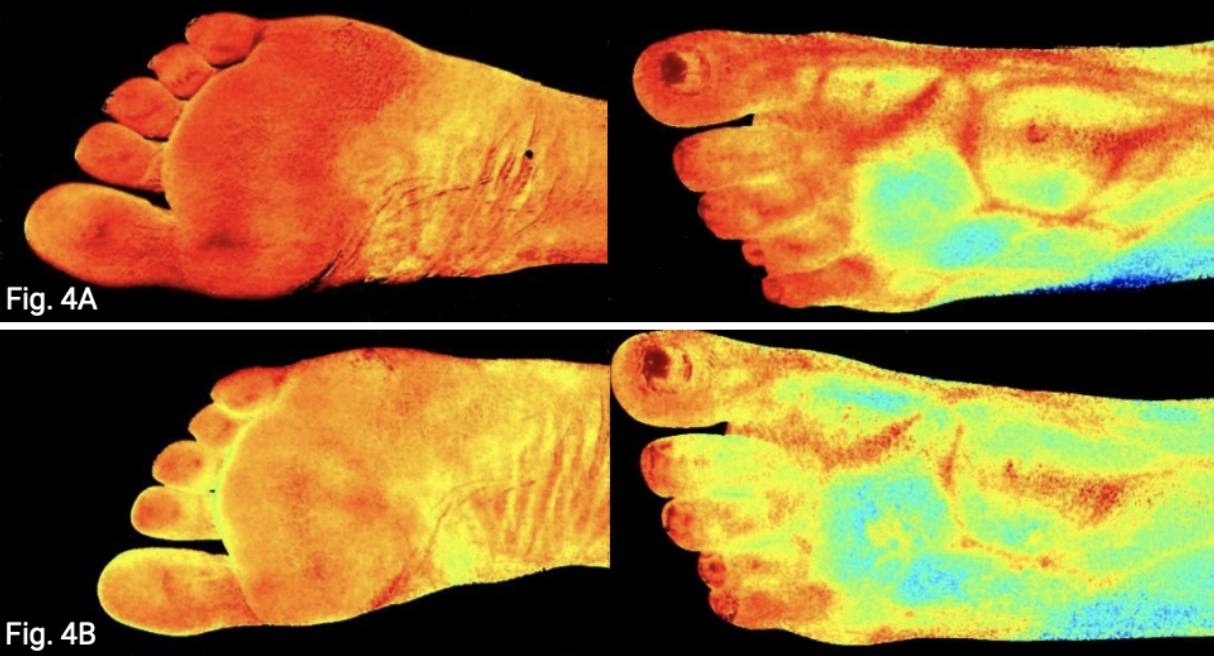
A 66-year-old female patient with type II diabetes, hypertension, morbid obesity, and no known history of peripheral arterial insufficiency was being seen by neurology for leg pain. Severe arterial disease was documented by utilizing SnapshotNIR images on the wound care study's initial evaluation, leading to subsequent vascular evaluations and treatment.
SnapshotNIR is a non-invasive vascular assessment that uses near-infrared light to identify the ratio of oxygenated to deoxygenated hemoglobin. This provides the medical professional with a low-cost measure of soft tissue oxygenation in a simple and consistent manner, at any care point.

Evaluating tissue health is critical to eliminating easily preventable flap failures. Post-op monitoring is done to ensure flap survival but can be very costly. Due to the expensive costs of ICG fluorescence angiography, many surgeons rely on clinical judgment alone. Yet poorly oxygenated skin flaps are often not clinically apparent until hours after surgery, at which point, they are more difficult to salvage and may have additional complications.
SnapshotNIR, without the need for dyes, injections, or even patient contact, helps to detect tissue viability issues in skin flaps earlier, allowing clinicians to intervene more quickly, helping to reduce complications and manage healthcare costs. With the portable footprint and low-price-point, SnapshotNIR brings tissue assessment to “every” surgeon, providing non-invasive monitoring that can be done anywhere – in the PACU or ICU, on the floor, or in the home.
